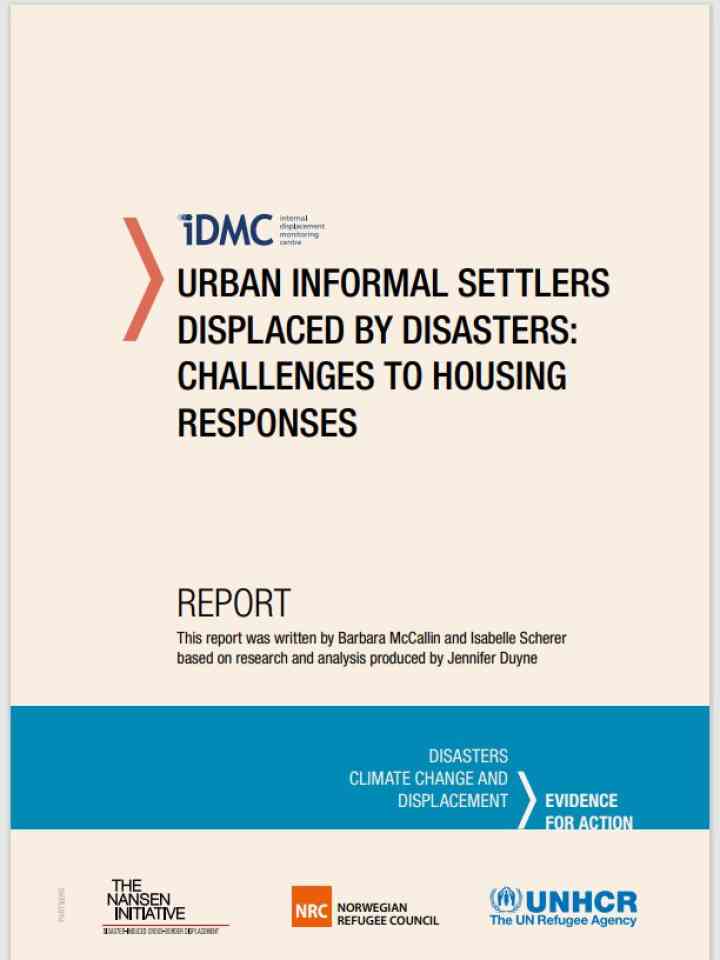Urban informal settlers displaced by disasters: challenges to housing responses
Informal settlers are more exposed and vulnerable to natural hazards than the general population and because they tend to live in flimsy, makeshift housing in at-risk areas, they are more likely to be affected and displaced by disasters. Moreover, they tend to receive less housing assistance in their aftermath, because they have only weak or informal tenure. This perpetuates and even increases their vulnerability to future disasters and displacement, and constitutes a serious obstacle to their achievement of durable solutions.
This report aims to inform national and regional humanitarian and development responses that facilitate adequate and durable housing solutions for displaced informal settlers following urban disasters. After reviewing the human rights standards and operational frameworks relevant to disasters, displacement and adequate housing, it examines the extent to which responses to date have addressed displaced informal settlers' needs in line with the right to adequate housing. It briefly presents and analyses nine case studies from Asia, America and Europe that illustrate the challenges inherent to the provision of durable housing in urban settings, and ways in which some of these challenges have been overcome.
The report confirms that housing responses tend to favour owners, often to the exclusion of urban informal settlers, most of whom are tenants or squatters. The complex and often confusing tenure arrangements in informal settlements, combined with weak urban governance, represent a significant obstacle to the provision of adequate housing assistance.
Explore further
